| Pages:
1
2
3 |
Sedit
International Hazard
    
Posts: 1939
Registered: 23-11-2008
Member Is Offline
Mood: Manic Expressive
|
|
Question Alexein,....or who ever may have the needed information.
Can these type of chemiluminescence have the ability to be used in a laser?
It would boil down to how many excited stated the molecule has.
Does it have just the lower state or is there a higher state that it can achieve and the drop to the lower to release the photon... if that makes
sence 
I know there are chemical laser being used by the military by these are excited dimmer lasers that are mostly useful for FIR.
BTW Nice work, glow sticks and such always where my favorite.. but that may be cause of all those years being chemicaly confused in clubs.
Knowledge is useless to useless people...
"I see a lot of patterns in our behavior as a nation that parallel a lot of other historical processes. The fall of Rome, the fall of Germany — the
fall of the ruling country, the people who think they can do whatever they want without anybody else's consent. I've seen this story
before."~Maynard James Keenan
|
|
|
Alexein
Harmless

Posts: 35
Registered: 14-7-2007
Member Is Offline
Mood: Metastable
|
|
O_o
o_O
Those are MY videos!!!
I find it hilarious ya found them.
I didn't post them here since i wanted to wait until i had a video on synthesis of TCPO.
Ah well, cat's outta the bag now 
| Quote: | Originally posted by Sedit
Question Alexein,....or who ever may have the needed information.
Can these type of chemiluminescence have the ability to be used in a laser?
It would boil down to how many excited stated the molecule has.
Does it have just the lower state or is there a higher state that it can achieve and the drop to the lower to release the photon... if that makes
sence 
I know there are chemical laser being used by the military by these are excited dimmer lasers that are mostly useful for FIR.
BTW Nice work, glow sticks and such always where my favorite.. but that may be cause of all those years being chemicaly confused in clubs. |
I've thought of that too. But to be honest, i really don't know. A population inversion needs to be obtained but i don't think it's possible to pump
enough dye molecules fast enough to obtain one.
But i'm not an expert on lasers, might be doable.
Hats off to anyone that can.
[Edited on 2-14-2009 by Alexein]
|
|
|
Sedit
International Hazard
    
Posts: 1939
Registered: 23-11-2008
Member Is Offline
Mood: Manic Expressive
|
|
Im not to bad with lasers and I answered my own question through a little searching. The short answer is no. 
Now there may be a possibility of this being capable of being pumped by a short pulse TEA or eximer laser but alot of that depends on wether or not
the fluid is transparent to the wavelength that the higher state generates...
Point being even if so there are easyer ways to go about generating this sort of laser and population inversion would just be to hard if not
impossible because I feel these may want to stay in the lower energy level for to long amount of time kind of like phosphor substances.
Knowledge is useless to useless people...
"I see a lot of patterns in our behavior as a nation that parallel a lot of other historical processes. The fall of Rome, the fall of Germany — the
fall of the ruling country, the people who think they can do whatever they want without anybody else's consent. I've seen this story
before."~Maynard James Keenan
|
|
|
Formatik
National Hazard
   
Posts: 927
Registered: 25-3-2008
Member Is Offline
Mood: equilibrium
|
|
| Quote: | Originally posted by Alexein
O_o
o_O
Those are MY videos!!!
I find it hilarious ya found them.
I didn't post them here since i wanted to wait until i had a video on synthesis of TCPO.
Ah well, cat's outta the bag now  |
The irony of it all. Well, you can always repost since I didn't find out how to embed them properly. They'll be discovered a second time. Anyways,
that soda bottle is one phat glowstick. It puts all the glowstick wannabes to shame.
|
|
|
a_bab
Hazard to Others
  
Posts: 458
Registered: 15-9-2002
Member Is Offline
Mood: Angry !!!!!111111...2?!
|
|
Would pentachlorophenol work instead of trichloro?
Does anyone have a synth for the oxalyl chloride (starting from PCl5 and oxalic acid)? It sounds like a dangerous reaction to me.
LATER EDIT: Thanks to Sauron and others I found out it can be done fairy easy. Not something for indoors though, unless having a *good* fumehood. 50%
doesn't bother me; I only need a few grams.
And Alexein, where did you get the TCPO synth from? What other phenol derivatives could work?
[Edited on 1-6-2009 by a_bab]
|
|
|
UnintentionalChaos
International Hazard
    
Posts: 1454
Registered: 9-12-2006
Location: Mars
Member Is Offline
Mood: Nucleophilic
|
|
Skimming the interwebs,
Pentachlorophenol:
pKa=4.74
2,4-dinitrophenol
pKa=4.08
This suggests that yes, you probably can use pentachlorophenol, although as mentioned earlier, the trichlorophenol has some advantages over the
dinitrophenol, which this would be similar to.
[Edited on 6-1-09 by UnintentionalChaos]
Department of Redundancy Department - Now with paperwork!
'In organic synthesis, we call decomposition products "crap", however this is not a IUPAC approved nomenclature.' -Nicodem
|
|
|
Formatik
National Hazard
   
Posts: 927
Registered: 25-3-2008
Member Is Offline
Mood: equilibrium
|
|
Here's some compounds that produce chemiluminescence 1 to 1.4 times more intensely than luminol: http://cat.inist.fr/?aModele=afficheN&cpsidt=827324
I wonder if p-phthalic acid (from PETE) can be nitrated to also yield a chemiluminescent compound after similar treatments as with nitro-o-phthalic
acid.
|
|
|
Rich_Insane
Hazard to Others
  
Posts: 371
Registered: 24-4-2009
Location: Portland, Oregon
Member Is Offline
Mood: alive
|
|
I'm just curious of how this mechanism works. Obviously what happens is a photon is given off somewhere in the reaction of a low wavelength, but what
is the reaction?
According to here it's like:


So what's going on is that the part connecting the trichlorophenols is folding in on itself, then that byproduct reacts with the fluorophor (the
anthracene dye) to give off light in the form of a photon.
Basically the ring-like molecule is exciting the fluorophor.
Am I right?
[Edited on 3-6-2009 by Rich_Insane]
[Edited on 3-6-2009 by Rich_Insane]
|
|
|
The Fountain of Discordia
Harmless

Posts: 31
Registered: 18-5-2009
Member Is Offline
Mood: FFFFFFFFFFFFFFFFFF
|
|
If that be the case, I owe ya thanks. Until I rediscovered my interest in chemistry, I had no idea of what I wanted to do in life. Your videos helped
rekindle that interest.
|
|
|
Ozone
International Hazard
    
Posts: 1269
Registered: 28-7-2005
Location: Good Olde USA
Member Is Offline
Mood: Integrated
|
|
IIRC, the peroxide oxidizes the TCPO to yield the dioxetane which spontaneously decomposes to yield 2CO2 and hv (which is in the UV range). The UV-hv
excites the fluorophore and the resulting emission is visible.
If you balence the equation you will find the staight oxalyl chloride will work just fine. The diester is just to make it easier to handle/store. I
have tested it with straight oxalyl chloride and it works fine.
Cheers,
O3
-Anyone who never made a mistake never tried anything new.
--Albert Einstein
|
|
|
Rich_Insane
Hazard to Others
  
Posts: 371
Registered: 24-4-2009
Location: Portland, Oregon
Member Is Offline
Mood: alive
|
|
Thanks!
The reaction is beautiful; Is this the reaction used in most glowsticks?
The main barrier for me is TCPO, but how would one obtain the anthracene dye? Is it a common flurophor? Can others be used, since the light is emitted
directly from the reaction?
|
|
|
a_bab
Hazard to Others
  
Posts: 458
Registered: 15-9-2002
Member Is Offline
Mood: Angry !!!!!111111...2?!
|
|
Read the whole thread:http://en.wikipedia.org/wiki/Lightstick (dyes listed).
Even rhodamine G would work.
|
|
|
Alexein
Harmless

Posts: 35
Registered: 14-7-2007
Member Is Offline
Mood: Metastable
|
|
How To Make TCPO
Hi guys
Here's how to make TCPO:
(I can't seem to embed the video though.)
http://www.youtube.com/watch?v=ViJknvEEEOA
Sorry for the late update, i've been busy.
[Edited on 6-4-2009 by Alexein]
|
|
|
Jor
National Hazard
   
Posts: 950
Registered: 21-11-2007
Member Is Offline
Mood: No Mood
|
|
Very interesting.
I want to make this sometime as well. As soon as I have enough money I will buy 25mL of oxalyl chloride.
I however, want to avoid the trichloropehnol as it is very environmentally unfriendly and a carcinogen.
So I need 2,4-dinitrophenol. At the moment I can buy 25g of 2-hydroxy-3,5-dinitrobenzoic acid cheaply. Will this decarboxylate easily, by heating with
NaOH or something else?
|
|
|
Ozone
International Hazard
    
Posts: 1269
Registered: 28-7-2005
Location: Good Olde USA
Member Is Offline
Mood: Integrated
|
|
I'd rather work with TCP. It's less toxic. 2,4-DNP is nasty stuff that can decouple electron transport after dermal absorption...after it has gone
through your gloves.
I made DNPO as a fast chemiluminescent probe, and it works well-But-the nitro groups make the rings much more electron withdrawing and this makes the
compound far more labile. This is good (for a probe), because it is fast and does not a require salicylate (or other) kicker. This is bad because it
is not as stable on storage. It glows brighter than TCPO, but for less time.
And your waste is a very nice acute poison that is probably also hell on plants.
Either works, take care,
O3
-Anyone who never made a mistake never tried anything new.
--Albert Einstein
|
|
|
garage chemist
chemical wizard
    
Posts: 1803
Registered: 16-8-2004
Location: Germany
Member Is Offline
Mood: No Mood
|
|
Jor, the 2,4-dinitrophenol is made by nitrating chlorobenzene to 2,4-dinitrochlorobenzene (see Gattermann or other organic chemistry lab book)
followed by refluxing in NaOH solution until homogenous.
Acidifcation then directly precipitates the dinitrophenol.
|
|
|
a_bab
Hazard to Others
  
Posts: 458
Registered: 15-9-2002
Member Is Offline
Mood: Angry !!!!!111111...2?!
|
|
Some questions:
1. is there a specific, "official" synth for TCPO? (a link to a doc, or a reference). I'm interested in this as I'd rather work with 2,4 DNP witch I
already have (as an indicator); I hate the idea of working with carcinogens like halogenated phenols (I have access to pentachloro-phenol). So maybe
there are safer alternatives. Would TNP work?
2. as for the solvent where the chemoluminiscent reaction takes place, can it be reused? Maybe distilled?
|
|
|
Ozone
International Hazard
    
Posts: 1269
Registered: 28-7-2005
Location: Good Olde USA
Member Is Offline
Mood: Integrated
|
|
Pick your poison:
2,4,6-TCP LD50 (oral, rat): 820 mg/kg (http://msds.chem.ox.ac.uk/TR/2,4,6-trichlorophenol.html); anticipated carcinogen (Merck).
pentachlorophenol LD50 (oral, rat): 146 mg/kg, may be absorbed through skin, more toxic in solvent (Merck). "Clear evidence links PCP exposure with
carcinogenic activity in test mice. Limited evidence links PCP with carcinogenicity in humans. One study links PCP with Hodgkin's disease on the basis
of a single family's case history and with the occurrence of the disease in carpentry and lumber workers in the United Kingdom (7). The World Health
Organization publication cautions against the any conclusions based on such limited data"(http://pmep.cce.cornell.edu/profiles/extoxnet/metiram-propox...).
2,4-DNP LD50 (oral, rat): 30 mg/kg, readily absorbed through intact skin (Merck). Lowest published lethal dose: 4.3 mg/kg (http://msds.chem.ox.ac.uk/DI/2,4-dinitrophenol.html).
Cheers,
O3
-Anyone who never made a mistake never tried anything new.
--Albert Einstein
|
|
|
Jor
National Hazard
   
Posts: 950
Registered: 21-11-2007
Member Is Offline
Mood: No Mood
|
|
How could trichlorophenol be synthesised? It indeed seems safer than 2,4-DNP, although the latter is used by bodybuilders in quite high doses to boost
their performances. So a little should't harm, but well I will go for TCP.
I'd like to start from salicylic acid if possible, but if needed I can also use phenol.
I have been thinking of buying all the things I need in a few months. 25mL oxalyl chloride (Aldrich, 20 EUR), 100 or 500mL triethylamine (Acros, the
500mL is only 7 EUR more expensive). Can anyone name some other interesting uses for wich i can use triethylamine? Otherwise I just buy 100mL as I
don't like buying excess amounts. Toluene, I need to buy that as well. Can this be dried by refluxing over sodium?
The dye is the biggest problem. The only cheap suitable dye is Rhodamine B wich gives a red chemiluminescence. Is this just as bright as the one in
the video?
The solvent diethylphtalate might be porblematic. I will have to make it myself from ethanol and phtalic anhydride. Is a catalyst needed, like H2SO4
or p-toluenesulfonic acid ?
Or I could ofcourse use ethyl acetate, but it is said to perform less well and for a shorter time.
And can trichlorophenol be effeciently destroyed? It's tricky to bring it in as waste, as it will be burned and I don't think the trichlorophenol will
burn and thus enter the environment.
Would the boiling in NaOH-trick replace one or more chlorine's by -OH ?
Or maybe a very strong reducer will do the trick? I have some pretty good ones including hypophosphite.
[Edited on 7-6-2009 by Jor]
|
|
|
UnintentionalChaos
International Hazard
    
Posts: 1454
Registered: 9-12-2006
Location: Mars
Member Is Offline
Mood: Nucleophilic
|
|
TEA is a great general purpose base for mopping up acid formed during reactions. I wonder if pyridine (Which I know you own) would be an acceptable
substitute in this case. Probably. It may even improve the reaction by forming an intermediate N-acyl pyridinium species.
Burning of TCP would generate chlorinated dibenzodioxins, so that is completely out of the question. Skimming around, it looks like fenton's reagent
is not terribly effective on chlorophenols. Perhaps fusion with NaOH/KOH eutectic is in order.
[Edited on 6-7-09 by UnintentionalChaos]
Department of Redundancy Department - Now with paperwork!
'In organic synthesis, we call decomposition products "crap", however this is not a IUPAC approved nomenclature.' -Nicodem
|
|
|
Alexein
Harmless

Posts: 35
Registered: 14-7-2007
Member Is Offline
Mood: Metastable
|
|
Quote: Originally posted by a_bab  | Some questions:
1. is there a specific, "official" synth for TCPO? (a link to a doc, or a reference). I'm interested in this as I'd rather work with 2,4 DNP witch I
already have (as an indicator); I hate the idea of working with carcinogens like halogenated phenols (I have access to pentachloro-phenol). So maybe
there are safer alternatives. Would TNP work?
2. as for the solvent where the chemoluminiscent reaction takes place, can it be reused? Maybe distilled? |
1. The reference at the end of the video is the "official" prep... although what exactly do you mean by "official"?
2. Yes, in fact i vacuum distill the solvent for reuse on a regular basis. The water bearing azeotrope comes off quickly and the solvent itself comes
off after with excellent recovery.
As for the TCP vs. DNP argument, I really don't know which one is better. I used TCP because i was afraid of the lower LD50 and explosive properties
of DNP. At the time i first started i wasn't confident enough in my abilities as a chemist to handle it safely. If you muck around with DNP all the
time and know it like the back of your hand then go for it.
But i will say this: two years ago I made 40grams of extra large and pure TCPO crystals by careful crystalization from THF. Even today, that same
sample (stored in an air-tight container) is as brilliant and potent as the day i made it. I still toss a few crystals into a fresh reaction mixture
every week after hours for fun and it still reliably gives me light.
So i can attest to its stability and longevity.
|
|
|
Ozone
International Hazard
    
Posts: 1269
Registered: 28-7-2005
Location: Good Olde USA
Member Is Offline
Mood: Integrated
|
|
Here's a .zip containing 5 papers. The best one is probably Mohan's (from American Cyanamide) from 1974 (It is the one I used the first time I made
the stuff).
There is some controversy surrounding the dioxetane-to-light step. In one of the papers, it appears that a dye-radical cation might exist briefly with
the CO2 radical anion. While this suggests the possibility of dye stimulation via intersystem cross, it does not necessarily rule out photochemical
(UV) excitation.
Hope this works, it might be too big. If it is, I'll upload a few manually.
[edit] hmm. It barfed up the zip (too big) and does not want to eat the Mohan paper, either (1.7 mb)? I'll try again.
[edit] "page not displayed". I'll try a smaller one (1.38mb).
[edit] nope, same thing. Try a smaller one yet (57.8 kb).
Cheers,
O3
[Edited on 7-6-2009 by Ozone]
Attachment: Hadd DNPO-TCPO mechanism and kinetics.pdf (58kB)
This file has been downloaded 1312 times
-Anyone who never made a mistake never tried anything new.
--Albert Einstein
|
|
|
Ozone
International Hazard
    
Posts: 1269
Registered: 28-7-2005
Location: Good Olde USA
Member Is Offline
Mood: Integrated
|
|
Oh well, here are screens of the Mohan paper. Sorry about the low quality, but they will get you by.
Cheers,
O3
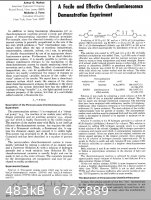 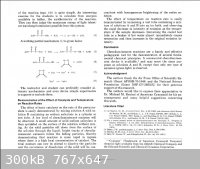
-Anyone who never made a mistake never tried anything new.
--Albert Einstein
|
|
|
Ozone
International Hazard
    
Posts: 1269
Registered: 28-7-2005
Location: Good Olde USA
Member Is Offline
Mood: Integrated
|
|
Same problem, for the Shakhashiri 1981 paper . .
Cheers,
O3
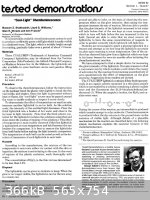 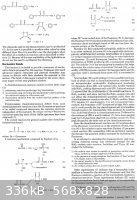 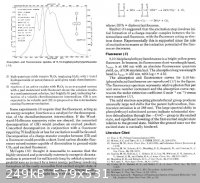
-Anyone who never made a mistake never tried anything new.
--Albert Einstein
|
|
|
ItalianChemist
Hazard to Others
  
Posts: 172
Registered: 26-1-2011
Location: Italy
Member Is Online
Mood: No Mood
|
|
The TCPO obtained still smells like 2,4,6-TCP?
I also tried it and when I added oxalyl chloride a lots of white smokes appeared...
[Edited on 19-2-2011 by ItalianChemist]
|
|
|
| Pages:
1
2
3 |